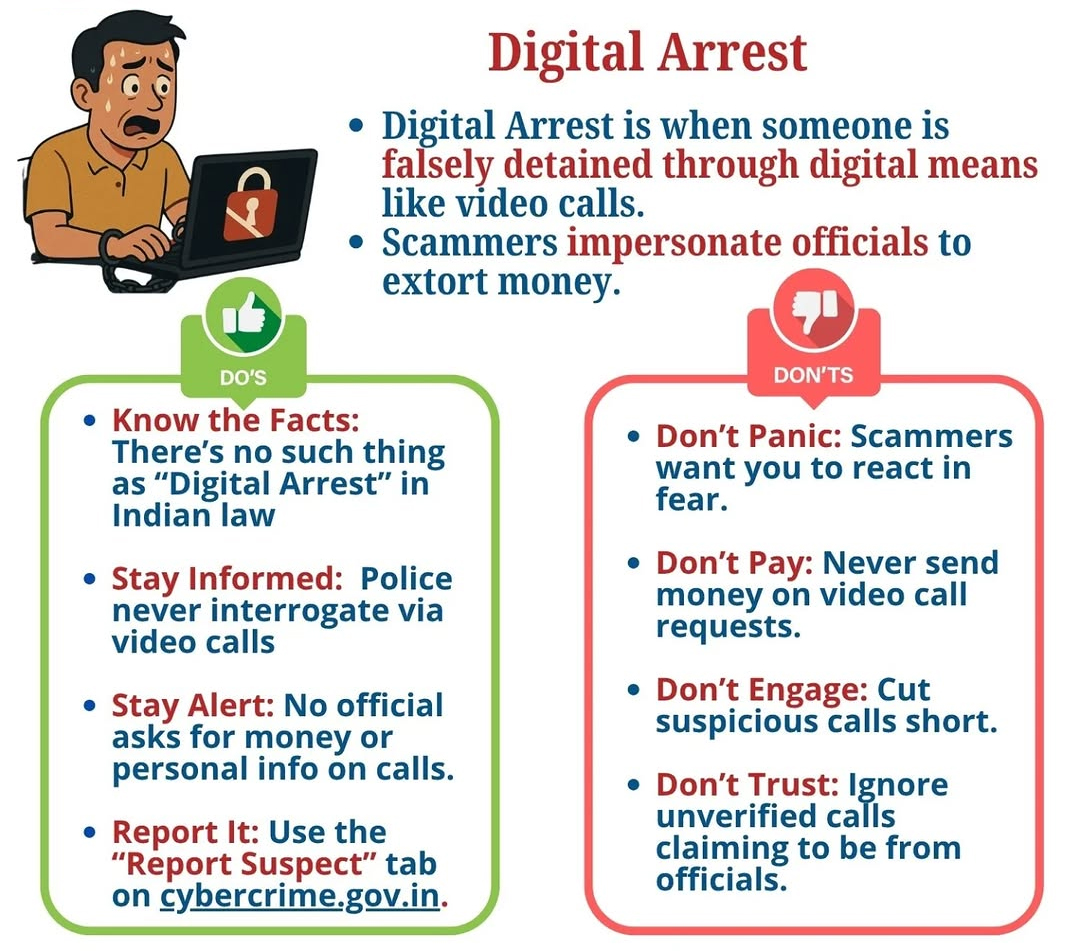Context:
The Supreme Court of India expressed concern over the growing menace of “digital arrest” scams. The Court noted that over ₹3,000 crore has been lost nationwide, calling for “iron-hand action” against such crimes and improved coordination between central and state agencies.
About Digital Arrest:
A digital arrest is a form of online extortion in which fraudsters:
-
- Impersonate officials from agencies like the CBI, ED, or Police.
- Accuse victims of being involved in criminal or financial fraud cases.
- Conduct fake interrogations over video calls or Skype.
- Threaten the victims with arrest, imprisonment, or asset seizure unless they transfer money.
- Impersonate officials from agencies like the CBI, ED, or Police.
Once victims comply, the fraudsters disappear, often after extracting large sums via cryptocurrency, wire transfers, or digital wallets.
Why Digital Arrests are Rising:
1. Explosion of Digital Transactions: Increased online payment usage widens opportunities for fraud.
2. Low Cyber Awareness: Many users lack knowledge about digital safety and verification processes.
3. Technological Sophistication: Use of AI-generated voices, deepfakes, and realistic video simulations.
4. Weak Global Enforcement: Southeast Asian scam hubs exploit jurisdictional loopholes.
5. Psychological Targeting: Criminals exploit public fear of law enforcement and authority
Government & Institutional Response:
|
Initiative |
Description |
|
Indian Cyber Crime Coordination Centre (I4C) |
Coordinates with banks, telecoms, and fintech firms to track cybercrime patterns. |
|
Blocking Spoofed Calls |
Systems developed with telecom service providers (TSPs) to block fake international numbers. |
|
National Cyber Crime Reporting Portal |
Citizens can report scams online at cybercrime.gov.in. |
|
CERT-In Guidelines |
Advises public to verify calls, avoid sharing personal data, and not install suspicious apps. |
|
Inter-Ministerial Committee (May 2024) |
Formed to tackle transnational cybercrime networks operating from Southeast Asia. |
Way Forward:
1. Public Awareness: Regular awareness drives, especially targeting senior citizens, about how to verify government communication.
2. Verification Mechanisms: Law enforcement agencies should publicize official phone/email formats to help citizens identify imposters.
3. Cross-Border Cooperation: Strengthen ties with ASEAN countries to dismantle scam syndicates.
4. AI-Based Fraud Detection: Develop indigenous tools to detect deepfakes and spoofed identities.
Conclusion:
The digital arrest epidemic exposes the dark side of India’s digital revolution, where technology designed for efficiency becomes a weapon of coercion. The Supreme Court’s warning signals an urgent need for coordinated action between government, law enforcement, judiciary, and citizens.







